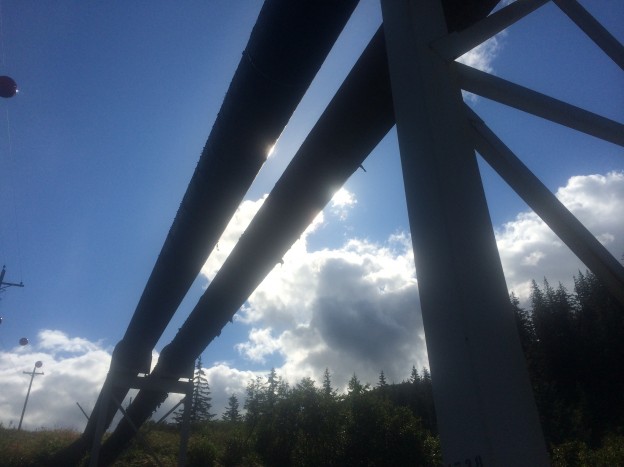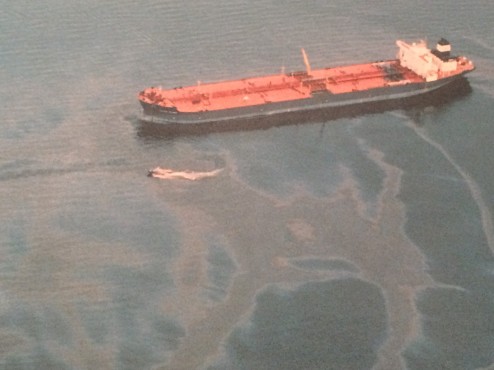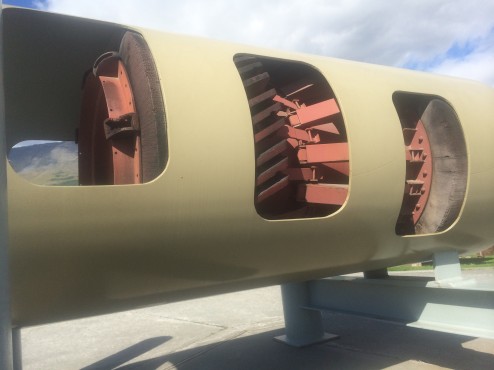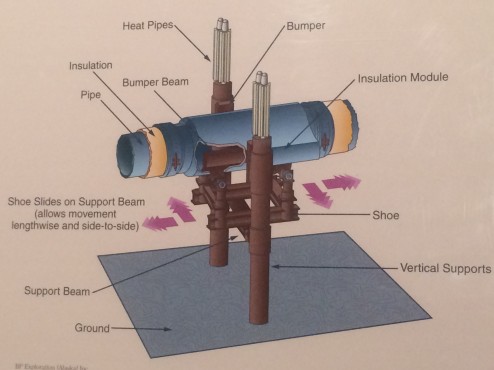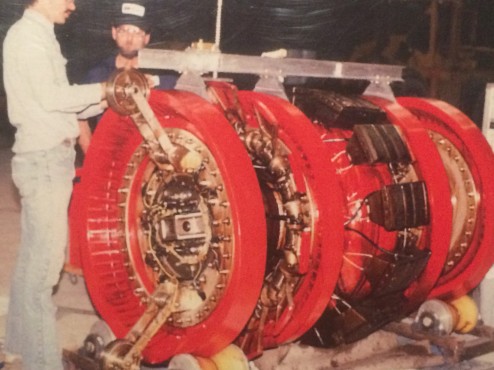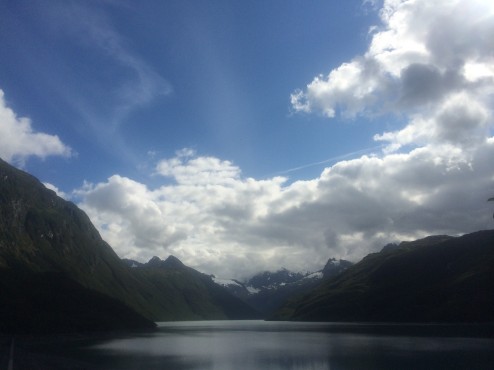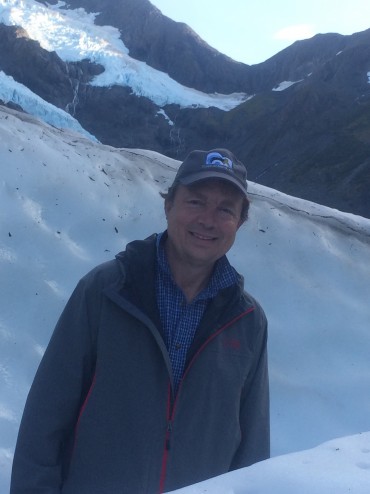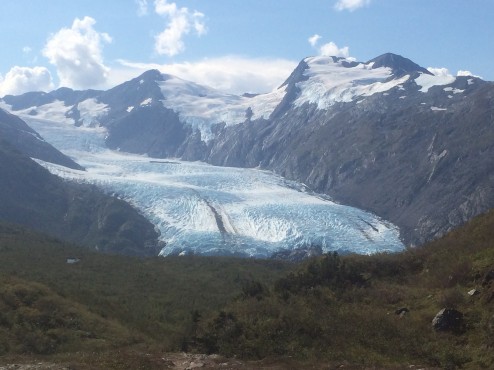Most of us following the news in 1989, learned a lot about Prince William Sound, and the oil tanker Exxon Valde-e-e-e-e-z. That was a pronunciation hint just in case you gave it the standard Spanish pronunciation or you weren’t paying attention to one of the most devastating human-caused environmental disasters. It was the largest U.S. oil spill until the 2010 Deepwater Horizon spill in the Gulf of Mexico…and taught biologists a lot about how NOT to deal with a massive oil spill.
The oil originally came by pipeline from the North Slope (at the Arctic Ocean), traveling 800 miles to Port Valdez. Loaded with 55 million gallons of oil, the Exxon Valdez grounded on Bligh Reef 30 miles from port, spilling between 11 million to 32 million gallons of crude oil over the next few days, depending on who is counting and their methodology. Oil covered 1,300 miles of coastline, and 11,000 square miles of ocean. Only 10% of the oil was recovered at the time as kelp clogged pumps, explosions (effective but relying on toxic chemicals) were halted by bad weather, and the biggest mistake, high pressure water blasting of the coastline, scoured off the organisms that assist with oil removal; 100% clean is not the goal of oil spill clean-up anymore due to its’ destructive impact. Because ExxonMobil’s pre-existing emergency response was inadequate for a spill of this size, the oil dispersal was rapid and long-reaching. Immediate effects included the deaths of 250,000 seabirds, at least 2800 sea otters (the slowest mammal to recover), 12 river otters, 300 harbor seals, 247 bald eagles, 22 orcas and an unknown number of salmon and herring. All of the populations have come back, except for the herring population.
Eleven years later, more than 23,000 gallons of oil remained in the sandy soil of the contaminated shoreline, declining at a rate of only 4% per year; this rate is remaining steady to the present. Although ExxonMobil had argued that the $507.5 million punitive damages eventually ordered by the court were not justified as the ship’s grounding constituted an “accident”, the fact that the inebriated skipper with a known history of substance abuse was put in charge of the tanker in the pristine Prince William Sound, supported a finding of responsibility.
Costing $8 billion, under construction for 3 years and 2 months, and having up to 28,000 employees working at once, the pipeline is the world’s largest and most expensive private engineering project. Insulation and passive cooling systems are in place above ground at each of the 78,000 vertical supports for the 420 miles of above-ground pipe. Over 380 miles of pipeline nestles underground in the thaw-unstable permafrost and requires recirculating frozen materials to protect the permafrost. The pipeline zig zags to allow for the movement of the pipeline during 5.5 Richter Scale earthquakes in the far north, and 8.5 in the last 90 miles approaching Valdez. At the Denali fault, the shoe slides seen above are 20 feet wide to allow maximum ‘wiggle’.
The pipelines are serviced by “Pigs” (scouring pig seen inside pipeline above, safety testing pig ready for insertion above to check pipe thickness and integrity with ultrasound waves). Pigs fit within the 48 inch diameter pipeline, and move through the pipeline from its’ placement in the pipeline at the first pumping station near the Arctic Ocean until it is removed in Valdez 800 miles later.
The planning and engineering required to build an entity which can monitor up to 85 million gallons of oil a day through 800 miles of rough terrain and underground passage, across 3 mountain ranges, including the continental divide and Atigun Pass at almost 5,000 feet, and never have any earthquake caused oil spill in its’ history is amazing to contemplate. Imagine if we gave 3 years of complete attention (and funding) by the best engineers in their fields to solve problems like global warming, eradicating preventable disease, or global access to clean water and sufficient food. Other than global warming, we really could accomplish these goals. However, without our increasing fossil fuel demand and corporate profit motive, do you see such progress occurring, in spite of our ability to accomplish the goals?
In 1976 Alaskan Governor Hammond wisely fought Big Oil and federal interests to legislate the establishment of the ‘Permanent Fund’ whereby the State holds profits in Trust for citizens, doling out dividends yearly, as low as $300 per resident some years, and up to $2000 this year. Surprisingly, Sara Palin as Governor was a moderate who worked with the Legislature to enact taxation on Big Oil’s profits. Unfortunately, when she abandoned office to become a Tea Party candidate, her Lieutenant Governor weakened the taxation laws, and public services had to be slashed to deal with the resulting deficit. Legislation to reinstate the Corporate Tax was defeated recently when Big Oil outspent the proponents of the Proposition by 50 to 1. She has since moved to Scottsdale, Arizona. The Anchorage paper reported a poll released 3 weeks ago showing 36% of respondents viewed Palin favorably, versus 55% who viewed her negatively. Locals tell us they didn’t really understand how silly she was nor her Tea Party agenda to help the rich get richer until her national campaign for Vice President; now they say she couldn’t win any election in the State of Alaska, even if she still lived here, as she does not represent your average citizen, only the rich ones….Joe the Plumber, Ha!
Fortunately, legislation is in place to protect Prince William Sound from another massive spill; each ship’s history of oil spills is reviewed before it can enter the Sound. The risk may become moot as the North Slope oil production is decreasing day by day. They are already discussing how they will dismantle the pipeline as required by 1300+ state and federal permits needed before construction could begin. About half of the pumping stations are off-line due to the decrease in the volume of oil passage.
Governor Hammond was smart to see the long-term picture and set up the Permanent Fund to benefit citizens, only after the State needs were satisfied. Alaska residents can get a college degree from University of Alaska in Fairbanks, Anchorage or Juneau for…$2000 a year. Very good planning by both Governors…until one of them sold out. At least Tina Fey’s career got a boost with the comedic material Sarah Palin provided during the campaign. Pretty funny that the State known for the largest Libertarian Party in the US (a majority of Alaskans, best described by their opposition to following ANY federal mandate or law) …get more federal funding than any other state.

